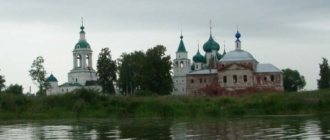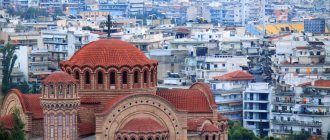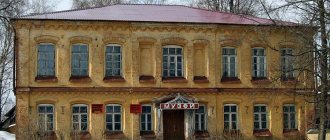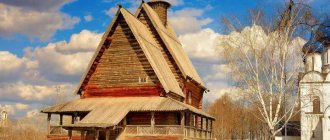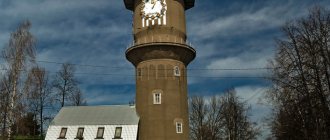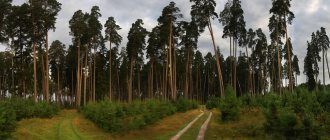We will tell you which attractions you must see in the Chechen Republic and in its capital - the city of Grozny.
A region where there are majestic mountains, fast rivers, dense forests, and endless plains. A world in which elders are revered, women are respected, children are loved, friends are helped, and guests are welcome. A region rich in sights and cultural institutions that are so attractive to tourists. A city with a formidable name and a huge heart - the “Heart of Chechnya”, the Akhmat Kadyrov Mosque, on Vladimir Putin Avenue. This largest mosque in Europe should be seen not only by every Muslim, but also by any connoisseur of beauty.
So, before you is a cultural map of Chechnya. Women, cover your heads with scarves, men, extend your hands to the ladies. Let's go on a trip.
Mosque named after Akhmat Kadyrov (“Heart of Chechnya”)
Construction of the mosque was completed in 2008. The inside is decorated with white marble and wall paintings. The height of the minarets of the mosque is 63 meters, these are the tallest minarets in Russia.
The multi-meter chandeliers, with their configuration and combination, personify the three most famous world shrines of Islam - the Kaaba in Mecca, the Rovzatu-Nebevi mosque in Medina and the Qubbat al-Sahra mosque in Jerusalem.
The mosque can accommodate more than 10 thousand believers, but during holidays hundreds of thousands gather around it. And without a doubt, the “Heart of Chechnya” today fully lives up to its name, gathering and uniting the people of the resurgent republic.
You can take photographs, but not everything
Towards evening, the temperature in Grozny dropped to +32 degrees and it was possible to safely climb to the observation deck “Grozny City” at an altitude of 110 meters.
— Grozny was rebuilt after the war, all these high-rise buildings appeared relatively recently. In Grozny City there are several apartments owned by celebrities. For example, on the 27th floor, a two-story apartment belongs to Gerard Depardieu. The head of Chechnya, Ramzan Kadyrov, gave him housing,” says tour guide Fatima.
Grozny was rebuilt after the war; all these high-rise buildings appeared relatively recently. Photo: Alisa TITKO
From above you can see the entire city: the Heart of Chechnya mosque, Putin and Kadyrov streets, a flower park. But not everything can be photographed. You cannot point cameras towards the presidential residence. Allegedly, the head of Chechnya often has high-ranking officials on official visits, and this cannot be recorded. It is not prohibited for guests to look at the dark green residence, as well as at the palace apartments.
The Grozny City observation deck offers a beautiful view of the city. Photo: Alisa TITKO
— Our pride is the Akhmat Arena stadium. We hoped that we would have matches of the 2022 FIFA World Cup, but there was only a training session for the Egyptian national team - we all know that the team successfully lost to our team,” recalls tour guide Fatima.
Museum of Local Lore named after Khusein Isaev
The Khusein Isaev Museum of Local Lore is located on the territory of the ancient Phakoch castle complex, dating back to the 11th–15th centuries. The path here lies through the Argun Gorge, and driving along a narrow winding road, guests can enjoy the amazing beauty of pristine nature.
On the ground floor of the museum, ancient weapons, jewelry, tools and household items that are more than a hundred years old are displayed. Those who wish can even try on national clothes.
The second floor is a memorial exhibition. It is dedicated to the memory of the first chairman of the State Council of the Republic, Khusein Isaev.
Distinctive features
The sights of Chechnya surprise those who come to these places with their ancient history and pristine beauty of nature.
Climate. Features of nature
The natural relief on the territory of the republic is very diverse due to its geographical location, combining mountains, lowlands and plains. This affects the diversity of climate and weather conditions. The semi-desert zone has dry, hot summers with dry winds from Kazakhstan. Vegetation and grass cover are severely burned.
Camel thorn, wormwood, and kochia grow here. Winter is short and with little snow, with temperatures dropping to -3, -5 °C, but severe short-term frosts are possible. The steppe zones have more comfortable weather with hot summers and mild winters, with plenty of rainfall throughout the year. Vegetation includes feather grass, fescue, and tree grasses.
Forest-steppes cover most of the plain, giving way to a mountain-forest zone. Here the climate depends on the altitude. Characterized by large amounts of precipitation and lower temperatures: in summer about +20°C, in winter -12°C. The natural and plant world is very diverse. The climate of the meadow zone is moderately cold, with long and snowy winters and damp, cool summers.
National dishes (list)
Vainakh cuisine in general is represented by meaty, hearty and simple fast-cooking dishes with a moderate amount of spices:
- Chudu is a national wheat or corn pies stuffed with fatty lamb meat and onions.
- Zhizhig-galnash is a very popular national dumpling made from unleavened dough, cooked in meat broth. Served with boiled lamb and garlic sauce.
- Chepalgash is prepared as a flatbread made from unleavened dough with curd filling, fried in a dry frying pan on both sides, then dipped in hot water and spread with butter.
- Khingalsh is made from soft wheat dough filled with sweet pumpkin puree.
- Dolmnash is a national cabbage roll served with potatoes and sauce.
- Dumplings with wild garlic, nettles or cottage cheese are called holtmash.
Population (number, mentality)
The population is approaching 1.5 million people. The absolute majority of residents are Chechens - more than 95%.
The remaining nations are distributed as follows:
| Nationality | number thousand people | % of population |
| Russians | 24,4 | 1,9 |
| Kumyks | 12,2 | 1 |
| chamals | 4,9 | 0,4 |
| Nogais | 3,4 | 0,3 |
| Tabasarans | 1,7 | 0,1 |
| Turks | 1,5 | 0,1 |
| Tatars | 1,4 | 0,1 |
| Ingush | 1,3 | 0,1 |
| Lezgins | 1,2 | 0,1 |
The inhabitants of the republic themselves call themselves Nochos or Vainakhs. For a long time, the highlanders freely engaged in combined agriculture and cattle breeding and were not adapted to forms of forced labor.
Constant dangers from warring tribes and raids to steal livestock and hostages encouraged us not to relax and be always on guard, as well as to strengthen villages by building defensive fortifications. And boys were taught almost from birth to wield a saber and sit in the saddle, raising a horseman.
Each clan had its own authority in the form of a council of elders, who enjoyed unquestioned authority and decided all the most important issues in the life of the community. Public opinion has always played a decisive role in any moral choice. The laws of blood feud and mutual assistance prevented chaos between community members.
Don't miss the most popular article in the section: Metro Nizhny Novgorod. Diagram, map, description.
Traditions and customs, holidays (briefly)
Each family honors and sacredly observes traditions passed down from generation to generation from the older generation to the younger. Like all Caucasian peoples, the Chechens have always observed the law of hospitality, according to which any needy traveler was provided with shelter and food without any questions.
It is interesting that after 3 days the guest lost all the privileges of the status; then it was necessary to leave the house or join the life and work of the community. According to etiquette and the law of hospitality, the owner of the house must eat at the table while his guests are eating. If a guest likes any item in the house, the owner is obliged to immediately offer it or give it as a gift.
Guests who are not close relatives or neighbors of the house are served at the table only by the eldest sons or men, but not by women. Parents do not pick up or caress their children in front of strangers. If the baby cries in front of guests, then the mother should take him away. Deceiving a dumb animal or a child is considered a despicable act.
Alms should always be given to the poor. If children quarrel or fight, adults always scold their children first, without distinguishing which of them is right or wrong. Any holiday begins with prayer in the mosque, after which congratulations to all relatives and friends follow, a visit is made to friends in the area, but they do not enter the house.
The son-in-law should try to congratulate his mother-in-law and father-in-law before anyone else, as a sign of special respect for them. On holiday, children also go out into the street, gather in groups and go from house to house, shouting congratulations. The housewives treat them with sweet gifts in gratitude.
Argun Historical, Architectural and Natural Museum-Reserve
Having preserved pristine landscapes, the museum-reserve is of great value as an area with a unique diversity of flora, fauna and architectural monuments.
The Argun Museum-Reserve is located in the most picturesque and at the same time in the most mountainous and inaccessible part of the republic.
This is a historical and geographical space where many unique objects of the cultural heritage of the Chechens are well preserved - cave grottoes, sites, tombs, ground burial grounds, underground and above-ground family crypts, military and residential towers and castle complexes.
In total, on the territory of the Argun Museum-Reserve there are about 600 monuments of history, culture, archeology, architecture and nature, of which more than 170 objects are considered monuments of federal significance.
Tourist potential of the republic
Region 95 is located in the east of the North Caucasus, adjacent to North Ossetia, Ingushetia and the Stavropol Territory. It covers an area of over 15,600 square kilometers. Speaking of relief, this area covers part of the Nogai steppe, the valley between the Terek and Sunzha (the reservoirs are separated by two low ridges, with a canal flowing between them). In the south, part of the said autonomy are the foothills (Black Mountains) and the high eastern massifs of the Skalisty and Pastbishchny ridges.
When thinking about what to see in Chechnya, you should initially pay attention to one statistical fact. The largest percentage of local residents and visitors visit sites of Muslim worship. It is appropriate to recall here that strict adherence to the Koran leaves some cultural imprint on the everyday traditions of the described subject of the federation. Sobriety, order, cleanliness, modesty and elders are respected here. Public places are empty after 18.00. Armed police appear on the streets.
Disregarding the general features and religion, we will inform you that in the region there are 26 sanatoriums, about a hundred hotels and guest houses, as well as the Argun Nature Reserve (the Argun and Shara-Argun rivers have the most waterfalls and springs). Not so long ago, the first Chechen ski resort opened near the village of Veduchi. A radical change in the increase in tours occurred in 2016 - the volume of tourists was 50% higher than the previous year. This segment continues to develop further.
Local history museum in the village of Makhkety
Local Attractions:
• Fortress-fortification, erected by order of the tsarist administration during the Caucasian War.
• Beech park in the village of Vedeno.
• High mountain lake Kezenoy-Am, on which the sports and training base of the USSR rowing team was located before the collapse of the USSR.
• Medieval Chechen traditional housing, battle towers and tower complexes.
Transport
Public transport is represented by city and suburban bus routes and train services. There are about 5 dozen bus routes in Grozny, most of which depart from city bus stations to any district of the city and the republic. There are several carriers.
A bus ticket costs 20 rubles, a minibus ticket costs 22 rubles. In summer, transport runs until 20:00, and in winter it ends another hour earlier.
A taxi ride is quite a budget and more convenient option for traveling, especially if you travel long distances in groups, spreading the amount among everyone. Some drivers practice exactly this method. The cost of travel around the city will cost from 150 to 500 rubles, and to the regions up to 1.5 thousand rubles.
State Gallery named after Akhmat Kadyrov
In the halls of the institution, exhibition exhibits from works of fine and decorative art by artists of the North Caucasus and Russia are updated monthly.
An exhibition of objects of decorative and applied art by the brothers Movladi and Movsar Yusupov from Shali is held on an ongoing basis. Among the exhibits of the exhibition are national musical instruments, weapons (sabers, daggers, battle axes, spears), armor of warriors of the 18th–19th centuries, as well as household utensils.
Dere Fortress.
The oldest architecture dates back to the 12th century . It is located in the Itu-Kalym region on the left bank of the Derkhin Erg River. It is popularly called “Chechen beauty”. She looks very tall - 23 meters, stately, like a girl. It is surprising that it has always remained untouched by wars. Consists of several tiers. From the top you can see the endless expanses of the mountains, the nearby village, and the beautiful Chechen nature. “Der” or “Dor” is translated from Persian as “gate” . It can be noted that this stone beauty stands precisely at the point of passage into the ancient gorges Argunskoye and Derkhoy-erksoke . This tower was protected by the invisible force of the mountains from invaders and from destruction. Today tourists look at it exactly in the form in which it was created in the Middle Ages.
In the Chechen Republic there are a lot of preserved ancient medieval architectural complexes, which are historical attractions. The complexes, once destroyed by military operations, have been restored by the state. Ancient fortresses, towers, castles that have survived natural and military destruction are of particular value and pride of the Chechen people.
Arbi Mamakaev Literary and Memorial Museum
Arbi Shamsudinovich Mamakaev (1918–1958) is a famous Chechen poet, creator of a new form of versification in Vainakh poetry. In nine working rooms of the museum there are more than two thousand exhibits that tell not only about Arbi and his literary heritage, but also about life and culture, about the historical past of the Vainakh representatives, about war participants (countrymen) since the First World War.
How to dress: it's hot, but shorts are not allowed
We arrived in Magas (Ingushetia). Although we would like to go straight to Grozny. But there are no early flights. And when the trip is limited to weekends, every hour is valuable.
The organizer Roman met us at the airport, and the minibus and guide Fatima were already waiting.
“On the way to Grozny we will see the ethnic open-air museum Dondi-Yurt, and for lunch we will have Chechen cuisine,” says the guide.
Early flights from Moscow arrive at Magas airport. Photo: Alisa TITKO
As soon as we left the airport, we found ourselves practically “in the oven” - the temperature was +38 degrees. Fatima just smiled and said that in Grozny it is now +42 degrees. At the same time, Chechens and tourists are prohibited from wearing shorts and sleeveless T-shirts.
“Slippers and open sandals are okay,” says Fatima.
We were told about deep necklines, mini dresses and items with bare shoulders even before the trip. They will not fine you for inappropriate attire, but this is definitely indecent in a republic where the main religion is Islam.
Literary and Ethnographic Museum of Leo Tolstoy
In the new building of the museum, rebuilt in 2009 with the support of the Regional Charitable Foundation of A. Kadyrov, with beautiful bright exhibition areas, in a new, modern form, exhibitions are presented in accordance with the profile of the museum. Nearby is the house where the writer lived. Typological corner - “The Courtyard of a Cossack and Highlander of the Mid-19th Century” presents stylized buildings from the time of Leo Tolstoy, household items, and tools.
Gudermes
The city is located on the banks of a river called Belka, 38 km from the city of Grozny.
In Gudermes you can visit the museum of Akhmat Kadyrov, the first president of Chechnya, who died as a result of a terrorist attack. It displays the politician's personal belongings and documents.
Among the attractions there is a mosque, a monument to the Chechens who died during the Great Patriotic War, a fountain and a stele on Tereshkova Avenue.
In addition, the city has a water park and an amusement park.
Chechen State Drama Theater named after Khanpashi Nuradilov
Created in 1931 as a theater studio; Here, for the first time in the history of the Chechen theater, women played.
Famous masters of Russian theatrical art collaborated with the Chechen theater - directors, artists, composers, choreographers: B. Shatrin, A. Slavin, V. Serebrovsky, K. Murzabekov, M. Tariverdiev, Yu. Gromov.
For 80 years, the Chechen State Drama Theater named after Kh. Nuradilov has been promoting the development of the culture of its people and making an original contribution to the all-Russian theatrical culture. This is confirmed by honorary titles, state prizes of Russia, achievements at all-Union and all-Russian festivals.
What to bring as a souvenir from Chechnya
You can bring many delicious gifts and useful souvenirs from a trip to the Caucasus region. An interesting treat would be Chechen flour halva in the form of balls of wheat or corn flour, fried in butter and sugar. Many people have fallen in love with another local delicacy: delicious chak-chak. You can bring an original souvenir that a meat-eater will surely like - dried sausage.
All this can be purchased at the local Berkat market on Muhammad Ali Avenue 43. National jewelry made of precious metals or brass, very fine workmanship, is very beautiful. Traditional dresses for prayer are made from natural fabrics with a loose fit and are perfect for gifts. You can also bring a beautiful national scarf.
The sights of the original Chechnya are very diverse, so everyone who comes to this amazing region is sure to find something interesting and unforgettable.
Article design: Ilchenko Oksana
Phakoch Castle
Phakoch Castle in Itum-Kali is located at the entrance to the Tazbichi , on the western side it faces Mount Dere-Akk , and on the east it reaches Tsunika. mountains. The tower town occupies a significant area, about 17,000 sq.m. , and extends from west to east for 140 meters . One longitudinal street passes through Phakoch. Until recently, there were only ruins here, but now the tower complex has been restored and is already open to visitors.
Hotels in Grozny
You can stay in the capital of Chechnya in one of the hotels, of which there are many on its territory.
The most luxurious and expensive hotel in Grozny is the hotel in the Grozny City complex. This is a modern, comfortable hotel with a swimming pool and SPA area. The price for a double room is about 7,000 rubles per day.
Other hotels in Grozny are a little more modest and cheaper. These are Arena City, Terek, Zama and the Laman-Az mini-hotel. The atmosphere there is a little simpler, but quite cozy, the cost of rooms is 3000-3500 thousand rubles.
Kezenoy Am - “Blue Lake”
Perhaps the most beautiful place in Chechnya, it may not be as interesting to explore as the towers or the English castle, but it is the combination of mountains and water that makes this place a leader on this list. Rising from the village of Kharachoy (which is located in the Vedeno district), you will discover the harsh and incomparable Kezenoy-Am, the Blue Lake, stretching over an area of 2.5 kilometers at an altitude of 1870 meters above sea level. This is not only the largest mountain lake in the North Caucasus. But it is also naturally very cold; the water at the surface never becomes warmer than 18°C. The average depth of the lake is about 72 meters , but the maximum depth is unknown - no one has ever dived that deep.
The formation of the lake is the result of a landslide that blocked the gorges of the Khorsum and Kauhi rivers slightly below their confluence. Thanks to this natural dam, we now have this amazing site.
Eisenam trout, which cannot be found anywhere else in the world, can be caught here. According to legends, this fish can cure many diseases, restore vision and restore joints.
Grozny business center
Named "the most destroyed city on earth" in 2000, Grozny is now being reborn and renovated. At the end of Putin Avenue is Grozny's business square, where for a few rubles you can take the elevator up to the business center's helipad, enjoy a few (non-alcoholic) drinks and get a bird's-eye view of Grozny. You can also take photos at this place, but keep in mind that taking photos from some angles on the site is prohibited.

